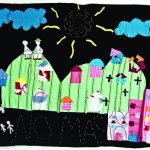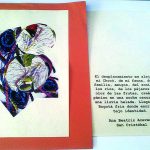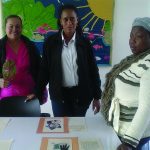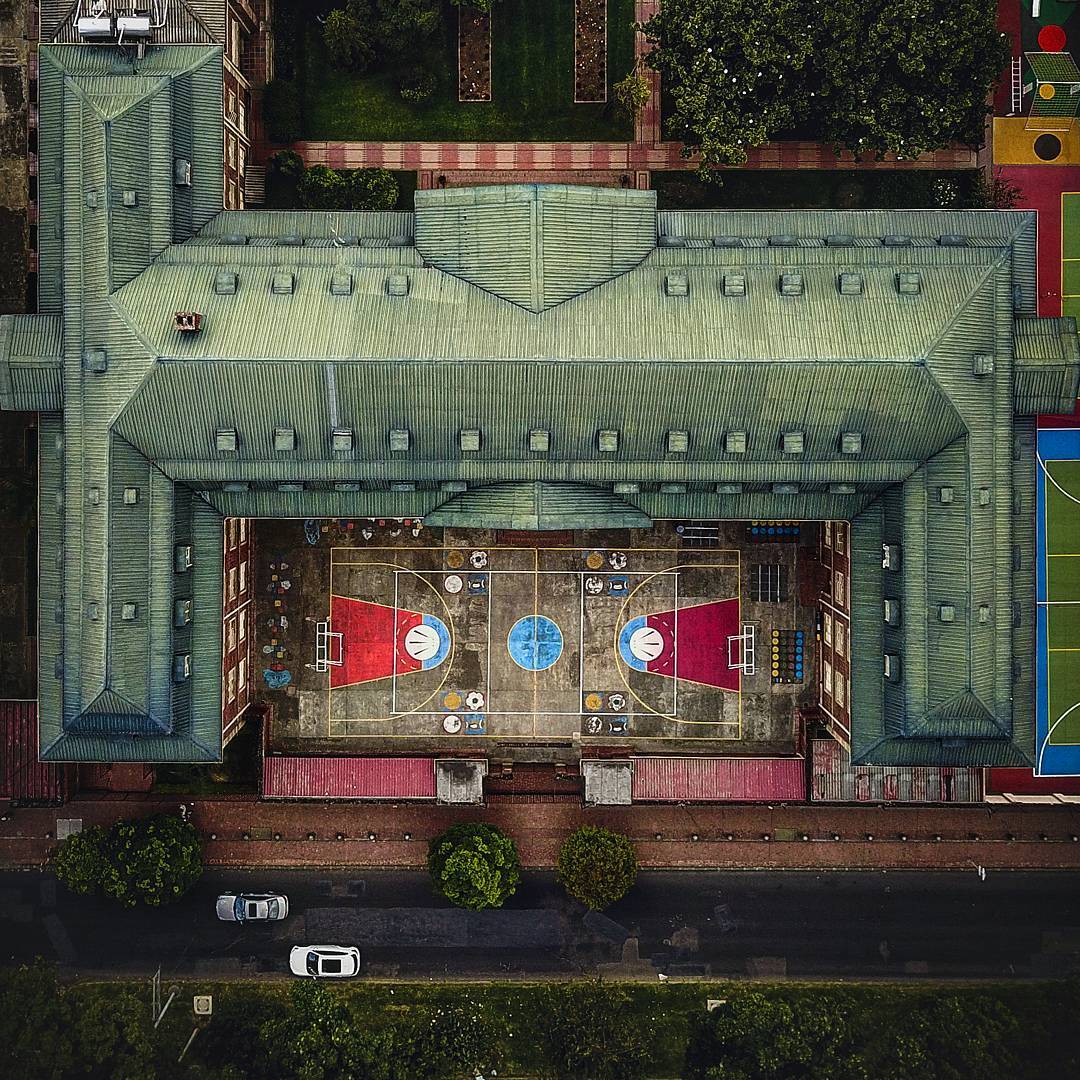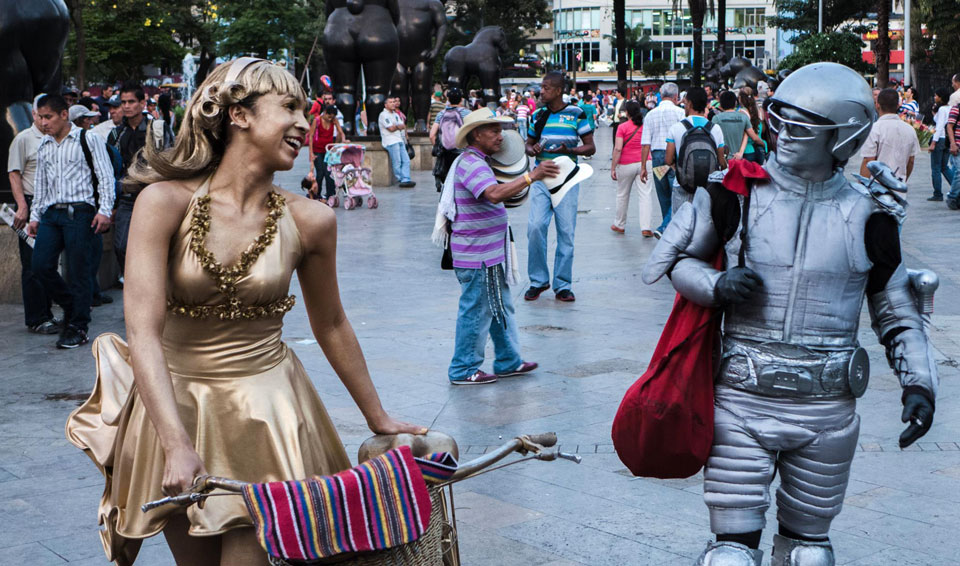The most recent exhibitions at the Centro de Memoria have been garnering international attention – we met with the editor of ‘ArtReview’, and the victims of the conflict behind the work to discuss the exhibitions and the centre’s impact.

Photo: Alfonso Rueda
Among the many art spaces in Bogotá, one that may not immediately spring to mind is the Centro de Memoria, Paz y Reconciliation on Calle 26. However, since opening in 2012, the centre has played host to many events and exhibitions. As technical director Dario Colmenares comments: “Once the Centre for Memory opened to the public, a wide spectrum of victims associations and human rights advocacy NGOs started developing all kinds of initiatives to take place in the building, generating a great demand for spaces for activities far beyond our initial expectations.”
In the last month alone, artists such as Andrea Echeverri and La Mojarra Electrica have graced its stage in the ‘Conversatorios’, a free weekly event where music and dialogue come together to discuss the impact of the conflict on communities throughout Colombia. Now, an exhibition running throughout April sees victims of the conflict given a voice.
With nearly 40,000 visitors per year, the centre is an important platform for discussion of the ongoing conflict in Colombia.
This platform has been further amplified by the visit of Mark Rappolt of Art Review, who viewed the centre’s exhibition on his first visit to Bogotá this week, in conjunction with the Casas Reigner gallery.
Although Bogotá has a thriving arts scene, he feels it is underrepresented on the world stage: “Sometimes when you come from a place like London, there are a lot of people that don’t have a lot to say…they are just used to having facilities to say it all the time. It’s always interesting coming to a place where people have to work more to do it.”
In the current climate of peace talks, international media generally focuses on the viewpoints of those at the table in Havana. It is refreshing to see people open to considering alternative platforms for those who are less often heard.
The art communicates what could otherwise be lost in translation, and the visual exhibitions play an important role in transcending boundaries for non-Spanish speakers who may not be able to take advantage of a traditional conference or dialogues with the victims of the conflict.
Mark adds:“I think that is one of the things that art is quite good at, because if they had just written it down, then I wouldn’t have had a chance of understanding…This idea of having this place that works as a kind of microphone or sound stage for people is really interesting and important.”
As Ana Beatriz, one of the participants in the exhibition, concludes: “The victims want to speak, they want their voices amplified, but often don´t have the means. Our resources were donated, and we received help so we could fulfill our dreams of a self-sustaining project to create a business. It´s been great, but we invite people to support our project so that we can give it an even bigger reach”.
Tapestries of life
“Costurero de la Memoria” is an exhibition of tapestries created by victims of the conflict via embroidery and applique using various medias.
Some of the tapestries depict lives before the impact of the conflict; others depict the conflict zones or final resting places of loved ones.
The exhibition was created in conjunction with the Minga Association and the Manuel Cepeda Vargas charity.
The Mothers of Soacha are one group who have participated in the creation of the tapestries.
They formed in the town of Soacha, just south of Bogotá, in 2008 after it was discovered their children had been abducted and killed by state forces in the ‘False Positives’ scandal.
- Costurero de la Memoria
- Costurero de la Memoria
Carmenza Gomez, one of the mothers, speaks about what the tapestries mean to her: “The tapestries mean a lot because they are telling the story of my life, of the death of my children… I’ve got many friends here in the tapestry group and personally, it is important due to the fact that nothing has progressed in the case of my late son. That’s always on my mind, so that’s why it’s very important to keep busy.”
She adds, “It [The Centro Memoria] is very important because through this cloth we are telling the story for the children of Soacha too.
I hope people understand that it’s not just a memory; the story is real, it’s ongoing. This is the story in our words, the words of the victims.”
Cartongrafías: Participation through publishing
The Cartongrafías project is an independent publishing project, set up to promote participation of both men and women who have been displaced in the conflict. The idea behind the project is for each individual to submit a drawing, complete with a short passage, poem or statement relating to their experience. The two are printed together, and used to create graphic content for notebooks. The notebooks, as well as being works of art, are also available for sale, thus creating a self-sustaining community project.
Three women from Cartongrafías, Ana Beatriz Acevedo, Carmen Balmaceda and Adelaida Palacios, discuss how participation both in the group and at the centre has benefited them.
Ana Beatriz talks about the creation of the artwork being an important part of the process: “The artwork is important as a form of expression, you can see it, you can read it. Furthermore it reflects the culture of our people. It also serves as an escape in which we can share part of our story.”
Carmen states: “It´s important to bring the art from our regions to Bogotá because this art is expressing a love of where I´m from. For me, I´m inspired by a love of my country because even though I was forced from the land where I was born, I´m here [in Bogotá] and have found that art inspires me to be happy”.
Ana Beatriz told us that the centre has supported their project, donating materials and workspaces, but that their initiative is now “under threat” due to the destitution of the former mayor, since they had also received help under an initiative from Bogotá Humana.
Adelaida explains the importance of the project, saying “The centre has lent a voice to the victims and taken account of our opinions and our point of view… also, here we receive mutual support.”
Carmen continues: “We´ve got to maintain the memory of those who cannot speak, because there are many people who cannot be here, or have left the country. I feel it´s important because we´ve made these books. For many years I wanted to speak, I wanted everyone to know my story, but for a long time I suffered with it instead.. but now I feel like I´ve fulfilled a dream”.
- Cartongrafías
- Cartongrafías
“Costurero de la Memoria” and “Cartongrafías” are currently being exhibited throughout April at the Centro de Memoria, Paz y Reconciliation at Carrera 19 No 24 – 86.
Nearest Transmilenio: Calle 26 or Centro Memoria
The notebooks are also available to buy from Cartongrafías and will be available at The International Book Fair (FILBO) from the 29th April – 12th May at Corferias. The group can also be contacted via the Centro Memoria.
More information on upcoming events and exhibits at the centre can be found at www.atcentromemoria.gov.co
By Amy Farrell
Photos: Alfonso Rueda


